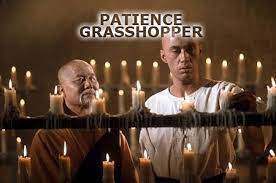My first job other than teaching was at a data analytics startup. I knew nothing about the private sector, let alone tech. Over my five year tenure there, I had the opportunity to learn some valuable lessons from more experienced coworkers who were on their third or fourth company, but still under 40. Here are two that have been the most beneficial to my own career.

Pre-Emptive Resignation Letters and Achievement Lists 📑
I had been the company admin for two years when we hired our head of account management. He had endless energy that I admired, managing to bounce from problem to problem with a tenacity and perseverance that he instilled to every account manager that joined his team. One day on a walk back from our local ice cream shop in Center City, biting into the cone and devouring the melting sugar, he gave me the best piece of advice I was ever gifted as young professional.
He encouraged me to keep what he called ‘the desk drawer file.’ It held two pieces of paper: a mock resignation letter with a list of why I’d consider leaving the job, written in my first week and tucked away, and a running list of achievements I’d made on the job that I added to as they happened.
“The first acts as a list of things you couldn’t compromise on when you were emotionally removed from this place. When you’re frustrated, you can look at it and compare what’s happening to determine if you’re compromising on your ethics or values for a paycheck. The list shows you what you learned, what you accomplished, and helps you weigh if staying is/was productive, especially on days when you feel like you’re not learning or doing anything of value.”
In the years since, I’ve kept a desk drawer file at each of my jobs, even when I’ve worked remotely. When it’s come time to make a difficult decision to move on or have a serious discussion with management about my growth and trajectory, the documentation from my past self has significantly helped me to make rational, well-considered choices. And, perhaps most satisfyingly, when I went on to manage my own direct reports, I was able to pass along this advice to others.
Yogurt Lids FTW🏅
A guy who would end up being one of our more senior developers was determined to have us hire him. He applied when we didn’t have jobs posted, when we posted jobs that didn’t suit him, and finally when we could use him as an engineer. Suffice to say, he was driven. But he was remarkably laid back in his attitude, something that meshed well with our existing team.
When he missed a deadline on a particularly tricky project, something that we didn’t penalize for or particularly complain about as a small group under 30 people that barely had a performance process, I could tell he was frustrated with himself. It took me a few days to notice the pile of yogurt lids stacked on his desk, when he stopped me from throwing away what I thought was trash on a routine sweep of the office.
“Those are my reminders. Every morning that I eat my breakfast yogurt and I don’t have the job done, I add to the stack.” It grew, and by the end of the week he’d fashioned a chain out of paperclips, hanging the string of them around the corner of his second monitor. Other devs took note, and would drop by to offer words of encouragement or code review. At the end of the month, when he finally did his final commit, there was a round of applause at daily stand-up.
In any job, we all have our yogurt lid task–an impossible problem, a whale that just keeps getting way from us with shifting priorities. Out of sight, out of mind, right? It’s easy to forget its importance if you can’t see it, especially if your startup is small enough not to use project management or task tracking tools. It snowballs, until finally you get so used to expecting the task not to get done that you stop working on it altogether.
Personally, I’ve developed a dedicated post-it note system for outstanding tasks. Once a week or once a month, depending on the job, I assess what hasn’t moved. On separate Post-it notes, I block out its title in clear letters with the amount of time it’s been left undone. The little neon squares stick to the bottom of my monitor, reminding me each time I sit down for the day that it’s unresolved and lurking under the surface. The satisfaction you feel when you get to shred that Post-it (or toss that yogurt lid) is immense. And, to me, better than just clicking a task off a Trello board.